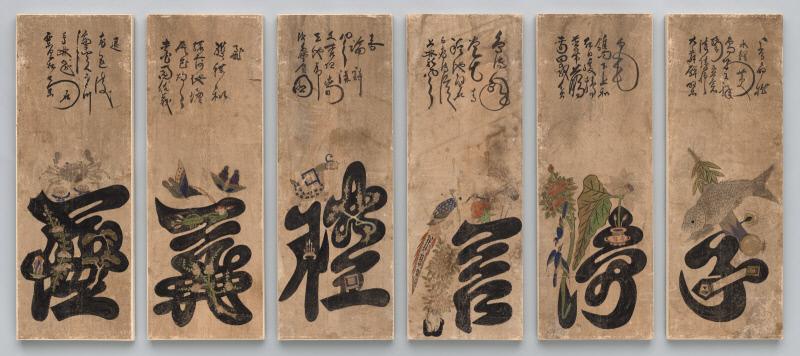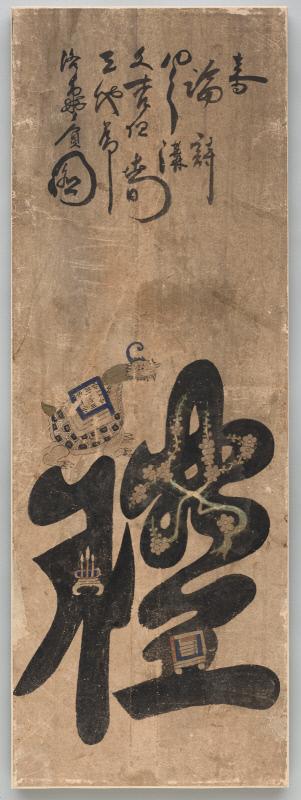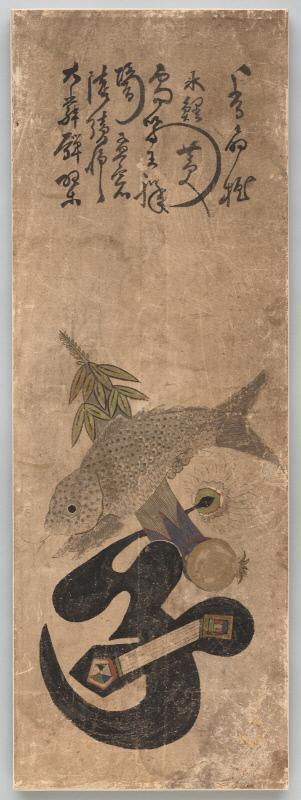
| # | Contents |
|---|---|
| Title |
A set of six munjado paintings
|
| Date | approx. 1800-1900 |
| Type | Painting |
| Description |
In pictorial ideographs (munjado), Classical Chinese characters are integrated with images that relate to the characters’ meanings. This set illustrates six of the eight most important Confucian virtues. They represent (read from right to left) the characters for filial piety (hyo), brotherly love (je), trust (shin), propriety (ye), righteousness (eu), and integrity (yeom). The paintings were once part of a screen of eight panels, and two paintings from the set, loyalty (chung) and sensitivity (chi), are missing. Such screens were often displayed in a child’s room or a scholar’s study, as the images and meanings of the characters served to instruct and inspire proper Confucian values. |
| Credit Line | Gift of Andrews D. and Kay E. Black |
| Right | Asian Art Museum of Sanfrancisco |
| Accession Number | 2018.76.1-.6 |
| Period | Joseon dynasty (1392-1910) |
| Culture | Korean |
| Place Associated | Korea |
| Medium | Ink and colors on paper |
| Dimensions |
H. 31 1/2 in x W. 11 1/4 in, H. 80.0 cm x W. 28.6 cm (each panel)
|
| URL |





